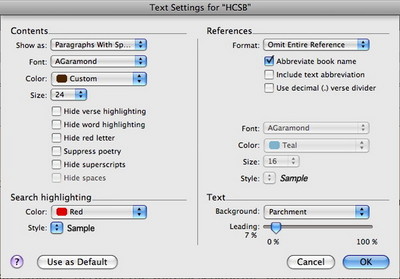When I was a teenager attempting to read the Bible for the first time, it was unlike any other book I had ever read. Yes, reading the Bible for myself was uniquely life-changing, but I’m referring to a distinctive which is much more prosaic and practical. Reading the Bible was unlike reading any other book not just because of its content, but because of the way it was laid out. In no other book that I had read to that point was each sentence (sometimes even the briefest parts of a sentence) divided up into separate chunks and numbered for easy reference. Unlike most books I had read, the Bible was versified.
I didn’t understand at the time how the layout of this Bible was affecting my reading of it. Rather than appreciating the great artistry of the narratives or the careful argumentation of the epistles, I tended to read each highly demarcated verse as a separate aphorism. Basically, I tended to read all of the Bible in much the same way one reads the book of Proverbs. I would focus on those verses which seemed to hold some useful or profound nugget of truth, while casually glossing over those verses which were less prone to jump off the page.
It wasn’t until I bought a ten-dollar hardback NIV that my experience of reading the Bible began to change. In that Bible the text was laid out in paragraphs and poetic lines which helped bring out the unity of the text. Verse numbers were present, but they were small, superscripted, and far less likely to draw the eye. Almost magically, the Bible was transformed from a book of religious sayings to a book of narratives, histories, stories, and letters. While my previous atomistic reading of the Bible had been profitable, reading the Bible as a series of coherent texts enabled me to see things I had previously missed.
Accordance makes it easy to minimize the impact of the Bible’s versification. By choosing Set Text Display from the Display menu, you can customize the way the text looks in a dizzying variety of ways. Try showing the text as Paragraphs with Space rather than as Separate Verses. Then set the format for the References so that the numbers are a small font size and superscripted. You could even set them to a lighter color to make them less distinct. If you really want to avoid the subtle influence of versification, you can choose Omit Entire Reference from the Format pop-up menu. You might also consider hiding other superscripts like the footnote markers. That way, you’ll have nothing but the text.
We deem the ability to change the paragraphing of the text and to remove the verse references as so important that we even give you a way to do that without having to go through a dialog box. The second and third items in the Display menu let you set how you want the text to be displayed and choose whether or not you want to hide the verse references altogether. That way you can quickly make these display changes whenever you want to read the text without distraction or demarcation.
By the way, even if you hide the verse references altogether, you can still see which verse you’re looking at by glancing down at the Go To box in the bottom right corner of the window. That box always shows the verse which is currently displayed at the top of the display pane.
While the title of this post might suggest otherwise, versification is a helpful system for finding specific passages. Yet to the extent that it encourages us to read the Bible atomistically, versification becomes a hindrance rather than a help. With Accordance, you can turn it off whenever it gets in the way.


